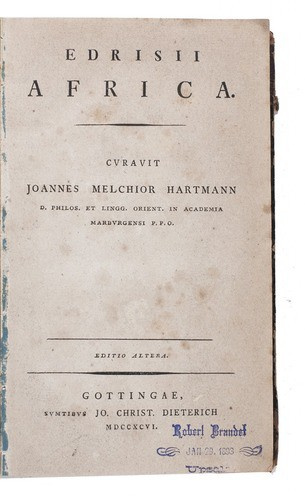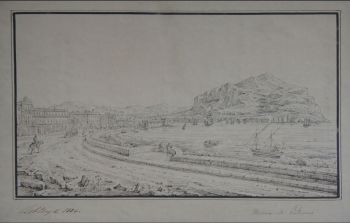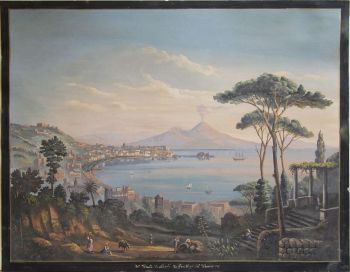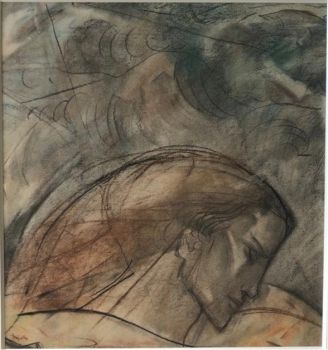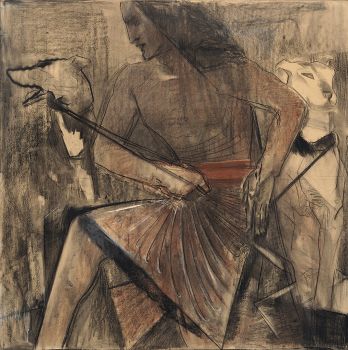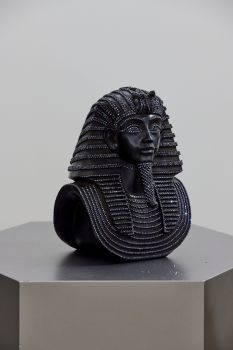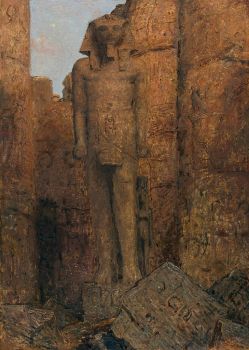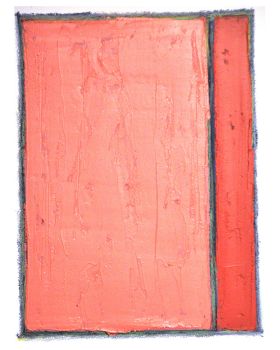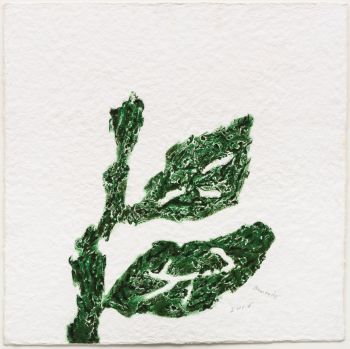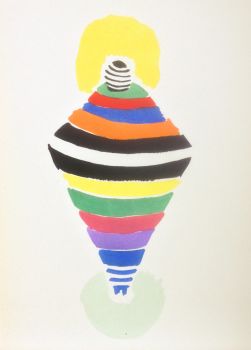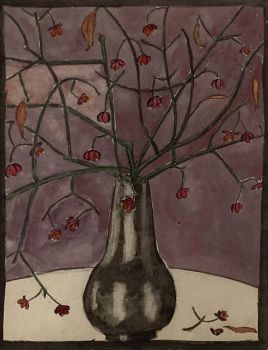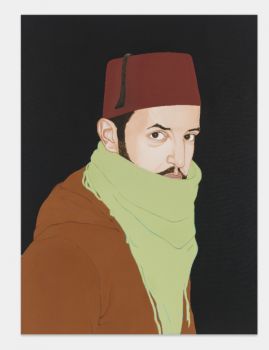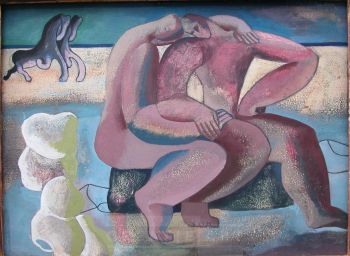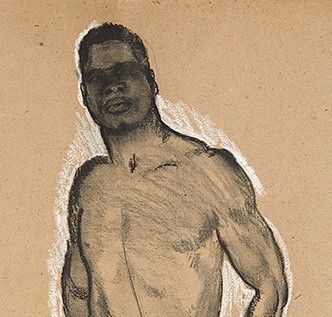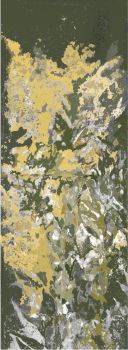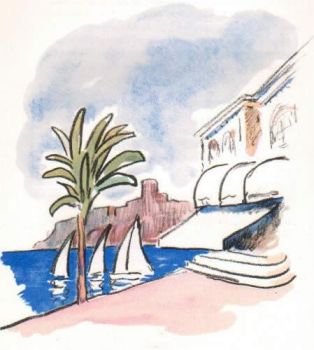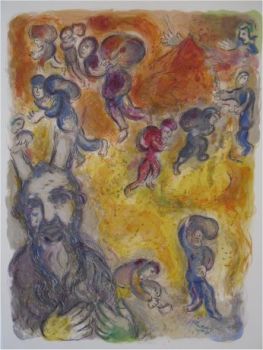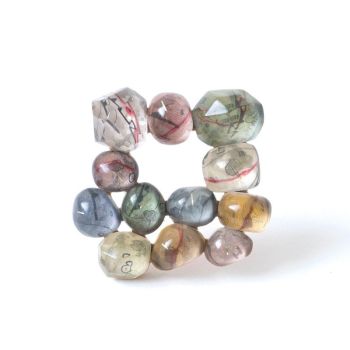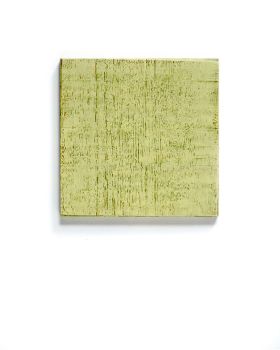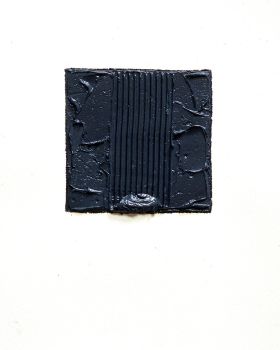Al-Idrisi's geographical account of northern Africa 1796
Muhammad Idrisi
PapelCuero
Actualmente no disponible a través de Gallerease
- Sobre la obra de arteAL-IDRISI, Muhammad and Joannes Melchior HARTMANN (translator).
Africa.
Göttingen, Johann Christian Dieterich, 1796. 8vo.
Slightly later black half goatskin.
Second edition of a Latin translation of a work on the geography of Africa, written by the Islamic geographer and botanist Muhammad al-Idrisi (1100-1165). It deals specifically with the geography of northern Africa, Egypt and the Sahara desert, covering its soil, cities, population, mountains, deserts, rivers and monuments. Al-Idrisi also mentions various travel routes from one city to the other. Around 1138, al-Idrisi was invited to the court of the king of Sicily, Roger II, who asked him to map the world as it was then known. This map is now lost, but Roger II also asked for supplemental texts to comment on the map. "Emissaries were sent far and wide, and from the information they brought back the Kitab al-Rojari [Book of Roger] was compiled, and completed by January 1154" (Howgego). Various manuscripts containing (parts of the) Kitab al-Rojari have survived, and the present translation was based on one of them. The present work was translated and edited by the Johannes Melchior Hartmann (1764-1817), who worked from a medieval Arabic manuscript at the University of Jena.
With a library stamp. Somewhat browned and foxed throughout. Binding worn at hinges and along the extremities. Otherwise in good condition.
Gay 345; Howgego, to 1800, I5; not in Atabey; Blackmer. - Sobre el artistaMuhammas al-Idrisi (nacido en 1100, Sabtah, Mor. — muerto en 1165/66, Sicilia o Sabtah), fue un famoso geógrafo árabe y consejero de Roger II, el rey normando de Sicilia. Se conocen pocos hechos sobre la vida de al-Idrīsī. Nació en Sabtah (ahora Ceuta, un enclave español en Marruecos), pasó gran parte de su vida temprana viajando por el norte de África y España y parece haber adquirido información detallada y precisa sobre ambas regiones. Se sabe que estudió en Córdoba durante un par de años. Viajó a muchas partes de Europa occidental, incluidos Portugal, el norte de España, la costa atlántica francesa y el sur de Inglaterra. Visitó Asia Menor cuando tenía 16 años. Hacia 1145, al-Idrīsī entró al servicio de Roger II de Sicilia, un paso que marcó un punto de inflexión en su carrera. Roger II le encargó que hiciera un mapa del mundo, lo que resultó en la finalización de tres importantes trabajos geográficos: un planisferio plateado en el que se representaba un mapa del mundo, un mapa del mundo que divide la Tierra al norte del Ecuador en 7 zonas climáticas y un texto geográfico como clave del planisferio. Esta fue su obra maestra de geografía descriptiva, conocida como Al-Kitāb ar-Rujārī ("El Libro de Roger"). Al-Idrīsī completó el libro en enero de 1154, poco antes de la muerte de Roger. El planisferio plateado se ha perdido, pero los mapas y el libro han sobrevivido. Al-Idrīsī tenía un buen conocimiento de la literatura árabe y también era un poeta consumado. Se desconocen los últimos años de su vida. Su nombre completo era Abu Abdullah Muhammad al-Idrisi al-Qurtubi al-Hasani as-Sabti (أبو عبد الله محمد الإدريسي القرطبي الحسني السبتي)
Artwork details
Related artworks
Tilmanus Nicolaus Maastricht
Missale Romanum con monturas de plata holandesas1788 - 1792
Precio a consultarJacob J. Roosjen SRI
Antonie Derkinderen
Memory book Exhibition of Dutch Painting1892
Precio a consultarKunsthandel Pygmalion
Engelbert Kaempfer
LIBRO DE ENGELBERT KAEMPFER1651 - 1716
Precio a consultarZebregs & Röell - Fine Art - Antiques
Hermann Nitsch
"UNDER MY SKIN" Signed book incl. small artwork and DVD in a matching box2010 - 2014
Precio a consultarGallerease Selected
Tilmanus Nicolaus Maastricht
Missale Romanum con monturas de plata holandesas1788 - 1792
Precio a consultarJacob J. Roosjen SRI
Engelbert Kaempfer
LIBRO DE ENGELBERT KAEMPFER1651 - 1716
Precio a consultarZebregs & Röell - Fine Art - Antiques
Antonie Derkinderen
Memory book Exhibition of Dutch Painting1892
Precio a consultarKunsthandel Pygmalion
1 - 4 / 22Marius Bauer
The Temple of Ramses II at Karnak Image in Luxor1919
Precio a consultarStudio 2000 Art Gallery
1 - 4 / 10Rene Rietmeyer
TOKYO - Kudan House - January 2021 #022021
Precio a consultarEuropean Cultural Centre Collection
Adrianus Johannes Groenewegen
Schaapsherder met kudde1874 - 1963
Precio a consultarGalerie Het Noorderlicht
1 - 4 / 24

